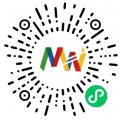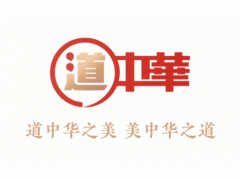01. Asian market is strong and digital printing is bright
According to the latest research report "the future of global printing by 2026" by the Smithers peel Institute, a global authoritative market research institution, the printing market will undergo major changes. The industry impact caused by the COVID-19 has gradually dissipated, but the resulting change in demand pattern will build a new pattern.
According to the report, by 2026, the size of the printing market will increase from $799.6 billion in 2016 to $834.2 billion, but the total printing volume will drop from about 49.2 trillion A4 sheets to 43.4 trillion. The market structure will also change accordingly. Label and packaging printing will grow rapidly and occupy an increasing share in the whole market.
Judging from the overall situation this year, the global printing and packaging industry is slowly recovering from the impact of the COVID-19. In 2020, the global printing volume decreased by 11.6%, and the market size decreased by 7.9%. In 2021, there was a slow recovery, with a total market size of 760.6 billion US dollars, equivalent to 42.2 trillion A4 paper prints produced on 239 million tons of substrate, and nearly 3.3 million tons of ink and paint were consumed. Printing enterprises and packaging processors used more than 591 million square meters of lithographic printing plates and nearly 6 million square meters of photosensitive resin flexographic plates, and invested about 15.9 billion US dollars to introduce new printing and packaging equipment. In 2021, the printing industry is mainly facing the pressure of cost and supply chain. With the extension of the delivery time of paper and paperboard, the prices of paper, paperboard, ink and printing plate and energy are also rising.
In terms of regional markets, although affected by the epidemic, the size of the Asian printing market will increase by 19.6% and the printing volume will increase by 1.7% between 2016 and 2026. In comparison, the printing volume in North America will drop by 28%, the market size will drop by 9.4%, while the market size in Western Europe will drop by 10.7%, and the printing volume will drop by 32.6%. Latin America, Eastern Europe, the Middle East and Africa achieved growth.
The report points to a major shift in the printing process being applied. Digital printing methods used in the field of commercial printing and label packaging are becoming more and more popular. In 2016, digital printing accounted for 2.1% of the total printing volume, but with the application of new technologies, this figure rose to 17.2% in 2021. It is expected that by 2026, digital printing (including hybrid printing) will account for 21.6% of the total printing volume. High added value has great attraction to printing service providers and equipment and consumables manufacturers. They are investing billions of dollars to develop and improve digital printing systems and put them on the market.
From the perspective of substrate and ink, the total consumption of global printing substrate in 2021 was 239 million tons. Among them, packaging accounts for 65.4% of the total consumption, which will grow to 311 million tons by 2026, which is driven by the increase in packaging demand. While the amount of printing paper has dropped, and some paper mills in Europe and North America have closed. From 2016 to 2026, the consumption of graphic paper will drop by 22.6%, of which newsprint has the largest decline.
Ink consumption is consistent with the printing volume. In 2021, the total product volume will be 3.17 million tons, and the market size will be 39 billion US dollars, accounting for 5.2% of the total printing market size. By 2026, the output will increase slightly to 3.51 million tons, and the market size will reach 50.6 billion US dollars. The proportion of inkjet and toner in the market size will increase. From 2016 to 2026, the global consumption of lithographic printing plates will decrease, but by 2026, the number of photosensitive resin flexographic plates will increase.
The report shows that in 2021, global equipment manufacturers experienced an increase in orders after experiencing a decline. The total market size of new printing equipment was US $15.9 billion, an increase of nearly 20% over 2020, but still lower than that in 2019. In 2016, digital printing equipment accounted for 28% of all new printing equipment, and this figure will reach 38.5% by 2026.
02. China's market growth is expected to be sustainable
With the rebound of the world economy and the effective control measures of the COVID-19, packaging production and sales in emerging and developing economies will grow fastest in 2021. The Smithers peel Institute's latest research report "the future of global packaging by 2026" delves into these trends and details the new technologies that will drive the growth of the packaging market by 2026.
According to the report, global packaging sales increased from 844.231 billion US dollars in 2016 to 953.972 billion US dollars in 2019, with an average annual growth rate of 4.2%. In 2020, global packaging sales increased by 1.5% to $967.865 billion, and it is expected to increase by 4.8% to $1.01 trillion in 2021. From 2021 to 2026, global packaging sales will grow to $1.23 trillion at an average annual growth rate of 3.9%.
Among them, Asia is the largest packaging market, accounting for 42.9% of the total sales of the global packaging market in 2020. North America ranked second, accounting for 22.9% of the total sales of the global packaging market, followed by Western Europe, accounting for 18.7%. Emerging and developing regions such as Eastern Europe, South America and Central America, the Middle East and Africa currently account for a relatively small share in global packaging sales.
It is expected that in the five years to 2026, the growth rate of packaging sales in developing countries and emerging countries such as Africa, Asia and Eastern Europe will exceed the average level of the global packaging market. Urbanization, increase in real income and development of logistics and retail infrastructure will drive the growth of packaging demand in these regions. Packaging sales in North America, Western Europe and Australasia (Australia, New Zealand and nearby South Pacific Islands) will grow at a relatively low rate. The packaging market in these regions is relatively mature and saturated, and the penetration rate in the field of end use is already high.
From a national perspective, China is the world's largest consumer of packaging, with sales of $237.236 billion in 2020. In terms of US dollars, among the top ten countries in packaging consumption, India and China had the largest increase in packaging sales from 2016 to 2019; During the same period, Japan, the United Kingdom and the United States experienced the slowest growth in packaging sales. It is expected that China and India will record the fastest growth in packaging sales among the top ten countries from 2021 to 2026.
From the perspective of packaging material consumption, cardboard is the largest packaging material, accounting for 33.1% of global packaging sales in 2020. Followed by flexible packaging, accounting for 24.7%. Hard plastic accounted for 20.6%, metal for 12.0%, glass packaging for 4.1%, and other packaging for 5.5%. In the future, the growth rate of paperboard sales will be the fastest, followed by soft plastics and hard plastics. It is expected that the growth rate of glass, metal and other packaging will be lower than the overall speed of the global packaging market.
Flexible packaging is replacing traditional materials such as glass cans and metal cans and is widely used in various scenarios. Flexible packaging usually costs less, and the packaging weight is much lighter, which can save freight. At the same time, the flexible packaging film can also provide barrier protection for extending the shelf life of products. But flexible packaging also faces key challenges. With the slow growth of key end markets such as candy, snack food and dairy products and the long-term decline of tobacco sales, especially in developed countries in Western Europe and North America, flexible packaging consumption has been impacted. From the perspective of environmental protection, brands and retail chains also promise to phase out non recyclable and difficult to recycle multilayer and multi-material flexible packaging films and adopt more sustainable and recyclable alternatives.
Sustainable packaging will continue to grow. Brands and retailers are responding to consumers' demand for packaging sustainability, including reducing packaging weight by reducing materials without affecting packaging performance, and using recycled plastics and bioplastics packaging.
03. Brand protection into potential stocks
The latest research report "the future of global secure printing by 2026" from the Smithsonian peel Institute shows that the global secure printing market will grow to $28.89 billion in 2021, up from $28.47 billion in 2020. During the global epidemic period of the COVID-19, this positive performance was caused by the increase in sales of paper money, payment cards and brand protection packaging functions. However, other sectors fell sharply.
The report analyzes the impact of a variety of market drivers, which will help drive the global security printing market to reach a market size of 35.02 billion US dollars by 2026, achieving a compound annual growth rate of 3.2%. The report also predicts several major changes. The demand for paper money surged, reversing the trend of more widespread use of electronic payment in the short term. However, in the next five years, demand growth will slow down, and the central bank and securities printers will re focus on alternative options. The demand for contactless payment and the continuous efforts to integrate the world's large number of people without bank deposits into the modern economy will make payment cards one of the fastest-growing segments in the same period. Personal identity document business has stagnated due to the epidemic, but the development of comprehensive electronic identity documents and the wider use of biometric technology will support the return of its sales.
At the same time, the sector with unfavorable prospects is ticketing. From 2020 to 2021, ticket sales continued to decline. The reduction of commuting, the increase of home office and the implementation of contactless travel system will all lead to a further decline in sales in the future. It is expected that checks will have a similar unfavorable situation and will further decline in 2026.
The prospect of brand protection will be more promising. Driven by the expansion of e-commerce trade and the implementation of traceability, this field will become the fastest growing field in the next five years, creating more opportunities for mature security technology suppliers. Although the mail volume will continue to decline, the new measures to prevent counterfeit goods will lead to an increase in the demand for stamps, and the market will refocus on tax receipts.
Such diverse prospects and the need to develop new digital services are pushing security printing enterprises to make a new strategic layout. Security components include ink, biometrics, RFID and coding, and printing process will continue to be the two major components, accounting for 50.1% of the global security printing market in 2021. From 2021 to 2026, the demand for stricter review of the supply chain and open and covert verification technologies will increase the need for RFID and coding, security inks and labels.







